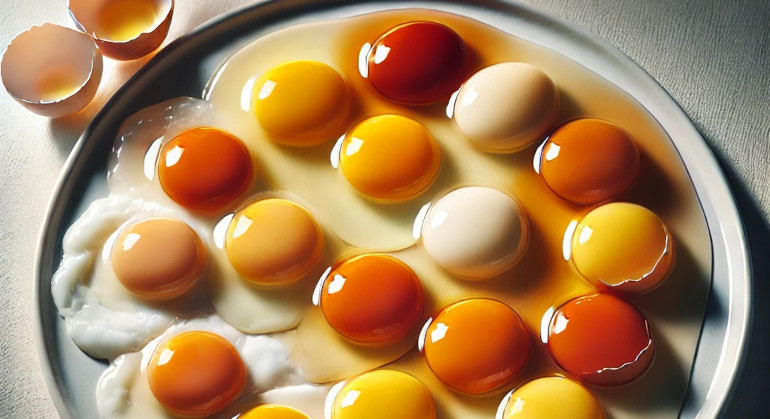


The color of a chicken egg yolk is often perceived as an indicator of its quality and nutritional value. A deep, vibrant yellow or even orange yolk is typically associated with healthier, more nutritious eggs, while pale yolks are often deemed inferior. But what exactly influences the color of egg yolks? The answer lies primarily in the pigments, known as colorants, present in the hens' diet. This article delves into the various natural and synthetic colorants used to influence egg yolk coloration, their sources, and their impact on both the poultry industry and consumer perception.
The primary natural pigments responsible for egg yolk color are carotenoids, a class of fat-soluble compounds found abundantly in nature. Carotenoids are divided into two main categories: carotenes and xanthophylls.
Xanthophylls are the most influential pigments in determining egg yolk color. The two most significant xanthophylls are lutein and zeaxanthin. These pigments are typically derived from green leafy vegetables and yellow or orange fruits and vegetables.
Beta-carotene, a type of carotene, is another natural pigment influencing yolk color. Present in carrots, sweet potatoes, and other orange-colored vegetables, beta-carotene not only enhances yolk color but also serves as a precursor to vitamin A, contributing to the nutritional value of the eggs.
A hen's diet plays a crucial role in determining the color intensity of egg yolks. Free-range hens, which have access to a variety of plants and insects, often produce eggs with more deeply colored yolks compared to caged hens fed a standard grain-based diet. Farmers and poultry producers manipulate feed compositions to achieve desired yolk colors that meet consumer preferences and market demands.
For instance, incorporating alfalfa meal, marigold extract, or paprika into the feed can significantly intensify yolk color. Similarly, feeding hens with corn or maize-based diets results in a naturally yellow to orange yolk due to the high levels of xanthophylls in these grains.
While natural pigments are preferred, they can be inconsistent in availability and potency, leading some producers to use synthetic colorants to achieve uniform yolk coloration.
Canthaxanthin is a widely used synthetic pigment in the poultry industry. It produces a deep orange-red hue and is effective in small quantities. However, its use is regulated due to concerns over potential health effects. In some countries, there are strict limits on the amount of canthaxanthin that can be added to poultry feed.
This synthetic pigment imparts a red-orange color and is often used in combination with other pigments to achieve the desired yolk shade. It is considered safe when used within regulated limits.
The use of synthetic colorants in poultry feed is subject to strict regulations to ensure food safety. Regulatory bodies like the European Food Safety Authority (EFSA) and the U.S. Food and Drug Administration (FDA) set maximum permissible levels for these additives. Excessive use of synthetic pigments can lead to residue accumulation in the eggs and potential health risks for consumers, making adherence to these regulations essential.
Yolk color significantly influences consumer perception and purchasing decisions. In many European countries, consumers prefer eggs with deep yellow to orange yolks, associating them with free-range or organic farming and superior taste and nutrition. In contrast, some Asian markets favor lighter-colored yolks. Understanding these preferences allows producers to tailor feed compositions accordingly to meet market demands.
While yolk color can indicate certain nutritional aspects, such as higher carotenoid content, it is not always a definitive measure of an egg's overall nutritional value. Both naturally and synthetically pigmented yolks can contain similar levels of proteins, fats, vitamins, and minerals. However, naturally pigmented yolks may offer additional health benefits due to the presence of antioxidants like lutein and zeaxanthin, which are beneficial for eye health.
The color of chicken egg yolks is primarily determined by the type and amount of colorants present in the hens' diet. Natural pigments like lutein, zeaxanthin, and beta-carotene play significant roles in achieving desired yolk colors, while synthetic colorants are used to ensure consistency and meet specific market preferences. Understanding the sources and effects of these pigments is essential for producers aiming to deliver products that satisfy consumer expectations while adhering to safety regulations. Ultimately, while yolk color does impact consumer perception, it is just one of many factors that determine the nutritional quality and taste of eggs.